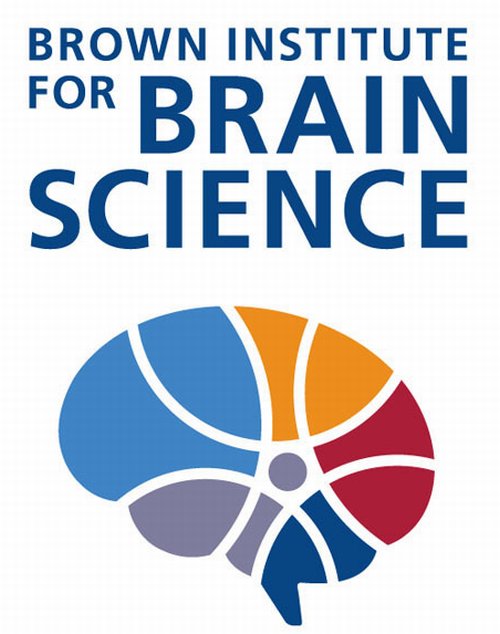Brown Institute for Brain Science marks decade of research impact
Brown Institute for Brain Science marks decade of research impact
The Future of the Brain, a two-day symposium Oct. 13-14, 2010, marks an extraordinary first decade for the Brown Institute for Brain Science.

PROVIDENCE, R.I. [Brown University] — Just as intense concentration allows a sharp mind to perform at its peak, a research institute that concentrates pre-eminent scientists from 11 academic departments can push back the frontiers of knowledge in a complex research area: the human brain.
That broad-based collaborative approach has allowed the Brown Institute for Brain Science to make major contributions to the field since it was founded as the Brain Science Program in 1999.
The community of more than 100 scientists will mark its first decade by welcoming top colleagues from around the country Oct. 13-14, 2010, to speak at a celebratory symposium, The Future of the Brain. Symposium sessions are open to the public without charge, but advance registration is required.
“Brain scientists at Brown University have had a profound impact on what we know about how we see, think, remember, move, and learn,” said Brown President Ruth J. Simmons. “They have achieved these things not only because of their individual excellence, but also because they are part of a thriving community of researchers with complementary expertise, common goals and interests.”
In the last decade, for example, Brown scientists affiliated with the institute have:
invented and refined a brain-computer interface — “BrainGate” — that people with paralysis have used to control machines with their thoughts;
discovered a new type of light-detecting cell in the eye; and
advanced physical theories of how the brain changes to enable learning and memory.
“The fundamental research we do on the brain and the entire nervous system often produces findings that we can translate into new technologies and treatments for disease,” said John Donoghue, professor of neuroscience and the institute’s director.
With $60 million in funding (including a $15-million endowment) and a dedicated staff, the institute is a catalyst among 11 departments ranging from computer science to neurosurgery for interdisciplinary research on the mind and brain, neurotechnology, and medical applications. Increasingly the institute will also support efforts to create “smart technologies” that employ computation modeled on how the brain works, Donoghue said.
Mental milestones
The brain-computer interface system developed by Donoghue and his colleagues, including Michael Black, professor of computer science; Leigh Hochberg, associate professor of engineering; Arto Nurmikko, professor of engineering; and numerous undergraduate and graduate students, debuted publicly in a 2006 paper in Nature. Building on many years of basic neuroscience and engineering research, the team showed how people with paralysis could control a cursor on a computer screen via an array of electrodes implanted in the brain. A second clinical trial began last year.
Many other institute researchers work on understanding how we see as part of the Institute’s Center for Vision Research. A team led by neuroscientist David Berson discovered in 2002 that in addition to rods and cones, the retina houses another type of cell that can respond to light, called intrinsically photo-sensitive retinal ganglion cells. Within three years, they had teased out evidence that these cells set the body’s circadian clock by detecting whether it is light or dark.
Other researchers at the institute contributed to knowledge about how the brain adapts to learn and remember. In 1982, physicist Leon Cooper (a Nobel Laureate for work in superconductivity) and colleagues developed a theory of synaptic plasticity — the ability to strengthen or weaken the connections between brain cells — and its role as the basis for learning and memory. Since then, several institute researchers, including Cooper, have continued to advance the field. For instance, Julie Kauer, professor of molecular pharmacology, physiology and biotechnology, has found that addictive drugs hijack memory-making mechanisms in brain reward centers in ways that cause persistent drug craving and contribute to relapse in substance abusers.
The most recent example of basic research producing a direct clinical application is in the lab of Justin Fallon, professor of neuroscience and an institute member. His underlying interest in the proteins that govern interactions at the junction of nerve and muscle cells has yielded a potential treatment for Duchenne muscular dystrophy. In parallel, his research into synaptic junctions has also led to insights into the fight against autism.
By focusing on fundamental research, Donoghue said, institute researchers expect to encounter more such instances in which they gain insight into multiple disorders that share common mechanisms.
The Future of the Brain
At the Oct. 13-14 symposium, The Future of the Brain, panel speakers hailing from academe and industry will discuss frontiers of research and its impact on understanding brain function, treating brain disorders, and creating brain-like machines. On Oct. 13, neuroscientist, primatologist, and author Robert Sapolksy will deliver the Future of the Brain keynote public lecture titled “Humans: Are we just another primate? Are we just a bunch of neurons?”
“Innovating the Brain” panels on that day will include industry experts such as Tim Denison, from Medtronic Inc., and Peter Norvig, director of research at Google Inc., discussing the future prospects for turning basic scientific knowledge of the brain into useful applications as well as using technology to restore lost brain functions.
Scientific panels on Oct. 14 will feature experts such as Mike Ehlers of Pfizer, debating the horizon of neurotechnology, vision research, and neurological disease. Bioengineer Kwabena Boahen of Stanford University will discuss efforts to make computer processors that mimic neural circuitry.
As it enters its second decade of investigating the physiology and functions of the nervous system, the Brown Institute for Brain Science intends to be the place where much of the future of the brain will be revealed.
* The above story is reprinted from materials provided by Brown University
** More information at Brown University (Providence, Rhode Island, USA)




















